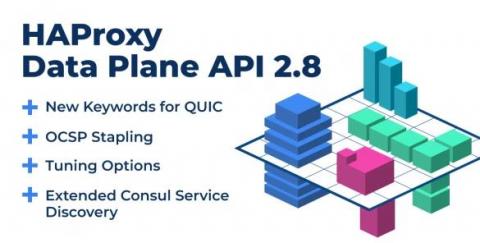Operations | Monitoring | ITSM | DevOps | Cloud
Latest News
DX NetOps SD-WAN Dashboards: Complete Visibility, Completely Customizable
In recent years, the adoption of SD-WAN technologies has taken off, and shows no signs of slowing. As enterprises become increasingly reliant upon these technologies, it grows ever more critical to ensure optimal availability and services levels are delivered. Most SD-WAN technologies feature monitoring capabilities. However, as outlined in one of my prior posts, there are several key limitations to these offerings.
Improved Usability for Metric Views, Enhanced Security and Extended AIOps and Platform Support with DX UIM 20.4 Cumulative Update 8
In today's fast-paced digital world, keeping up with the latest technology advancements is crucial for businesses to stay ahead of the competition. This is especially true in the world of IT infrastructure management, where technology is rapidly evolving and new solutions are being developed to meet the changing needs of enterprises, government agencies and managed service providers.
The Ins and Outs of SaaS Network Monitoring: A Comprehensive Guide for Optimal Performance
3 Key Insights from the Gartner Market Guide for SaaS Management Platforms
8 Ways to Meet Enterprise Network Service Level Agreements (SLAs)
Large cloud providers and ISPs offer service level agreements (SLAs) that guarantee uptime and help seal the deal with enterprises that value uptime. These same enterprises often ask IT to make the same guarantees for the performance and uptime of the internal network, its many varied connections and even the applications. At the same time, IT may have myriad SLAs from all kinds of vendors—including the aforementioned ISPs and cloud providers—it must manage.
Announcing HAProxy Data Plane API 2.8
We are proud to announce that we have released HAProxy Data Plane API 2.8, available on our GitHub page. This release follows the recent HAProxy 2.8 release and incorporates its changes, along with some improvements and changes specific to the API. HAProxy Data Plane API 2.8 adds new keywords focused on QUIC, OCSP stapling, and tuning options that allow you to customize your HAProxy process using the HTTP REST API programmatically.
What is Network Throughput: From Bytes to Blazing Speed
8 Common Uses of VPN in 2023: How People Leverage Its Benefits
SD-WAN Monitoring: Why Edge-to-Edge Coverage Isn't Enough
In recent years, network operations teams have had to contend with several critical challenges, including: In response to these challenges, teams are increasingly turning to SD-WAN. The market for SD-WAN is massive, and continuing to grow, potentially reaching $47 billion by 2031. Through SD-WAN technologies, organizations are able to realize a number of benefits. However, these benefits aren’t a sure thing. In fact, many teams encounter challenges with their SD-WAN implementations.









